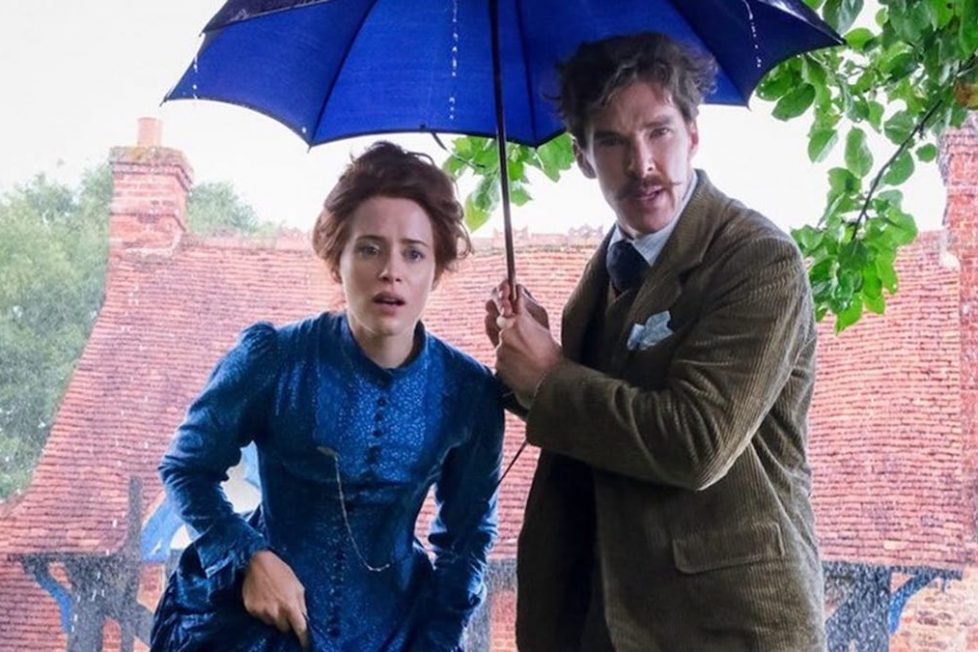THE ELECTRICAL LIFE OF LOUIS WAIN (2021)
The late Victorian artist Louis Wain becomes famous for his pictures of cats, but family and mental health problems plague him.

The late Victorian artist Louis Wain becomes famous for his pictures of cats, but family and mental health problems plague him.


Long before Garfield or Grizabella, there was Louis Wain—the Victorian artist who, from 1886, produced thousands of drawings and paintings of anthropomorphic cats and helped convince Britons that the animals, previously seen merely as useful vermin-catchers, could be lovable pets as well.
Wain’s artwork is still widely familiar today, but the artist behind them less so. Will Sharpe’s biopic, as ambitious and idiosyncratic as its subject, may do much to change that, and even if it doesn’t entirely succeed in its goal of taking us deep inside Wain’s world, it does plenty to spark interest in him. It’s also eminently engaging from start to finish.
The film opens in the mid-1880s, with Wain (Benedict Cumberbatch) working as a jobbing illustrator to support his widowed mother and five sisters. The oldest of these, Caroline (Andrea Riseborough), rather dominates the young man, whose passionate and very Victorian interests in everything from music to science do nothing to improve the family’s situation. The opera Wain’s written meets with incredulity from the conductor, Henry Wood (Richard Ayoade), and his fascination with electricity verges on the mystical.
Things look like they might improve in Wain’s personal life after he marries his younger sister’s governess, Emily (Claire Foy), and despite raised eyebrows at their class and age differences (she’s older) they are deliriously happy together. They adopt a cat called Peter, too, and Wain starts creating pictures of him…
These drawings lead to improvement in his professional life when Sir William Ingram (Toby Jones), managing director of the Illustrated London News, commissions Wain to produce two pages of cat pictures for the journal’s Christmas edition. They prove a hit with readers, and before long the prolific Wain becomes famous too, although mismanagement means he sees little from the sales of his artwork.
There’s tragedy in Wain’s life too, and a long slide begins during which his pictures grow stranger and stranger while his conviction that he’s on the verge of a profound discovery regarding electricity remains undimmed.
Sharpe’s film follows Wain through all these joys and travails, over a period spanning around 50 years, and with less than a two-hour runtime this necessarily makes it episodic. Exacerbating this, some scenes are definitely unnecessary, Sharpe seemingly determined to tick off every significant event one by one. For example, there’s no need to show us the death of Sir William, who’s a relatively incidental figure in the story.
And while many others moments are effectively done (notably Wain’s reaction to a close family member’s death, filmed with devastating obliquity) The Electrical Life of Louis Wain can be frustrating in the way it invites us close to its subject but is too hurried for us to truly understand what’s beneath the superficial details of every situation.
The sense of distance this creates is heightened by an extremely mannered style in many facets of the film: the way Cumberbatch renders Wain’s social awkwardness, photography that emphasises the unusual angles of his face, the artificial colouring of the woodland that becomes a favourite spot for Wain and Emily, the antics of the proto-Cat Ladies at a convention of feline-lovers, even the poise of Peter the cat himself (reportedly not CGI). It’s difficult to escape the feeling we’re watching a fable rather than a life lived.
Still, wherever he can Cumberbatch allows us generous glimpses into the emotional man beneath the odd, obsessive, and increasingly mentally disturbed surface. Many of the fine actors in the female cast are somewhat wasted—Wain’s sisters being little more than tokens of nagging neediness—but Hayley Squires has some startling moments as the youngest (herself plagued by mental illness), and Foy is persuasive as Emily, a woman more grounded and worldly than her younger husband. The relationship of Wain and Emily is perhaps the most authentic-seeming thing about the film.
Jones, meanwhile, is as entertainingly watchable as always. Taika Waititi makes an unexpected appearance as an American newspaper editor enthusiastic about Wain’s work, and Nick Cave makes a bizarre appearance as sci-fi author H.G Wells, publicly taking up the impoverished Wain’s case in the artist’s last years.
The Electrical Life of Louis Wain raises more questions than it ever answers. What did Wain really think of cats in general, beyond his adored Peter? What did he really think of his family, and they of him? Were his talents in music, the theatre, science and philosophy as eccentric—or downright nonexistent—as his contemporaries seemed to think, or were they real and unrecognised? Was he a genius, or simply someone whose quirks led him by chance to create an imaginary society of cats that resonated with the public? Or both?
Still, even if Sharpe’s film tantalises more than it satisfies, it’s nearly always fresh and original (as far removed from the reverential Great Artist biopics of the past as could be), and benefits from an obvious sympathy for its subject as well as strong performances in the two central roles of Wain and Emily.
It’s often funny, and occasionally moving. And if the interior life of Louis Wain remains ultimately as unknowable as that of a cat, perhaps this peculiar, likeable movie is precisely the right tribute to him.
UK • USA | 2021 | 111 MINUTES | 1.33:1 | COLOUR | ENGLISH
director: Will Sharpe.
writers: Simon Stephenson & Will Sharpe.
starring: Benedict Cumberbatch, Claire Foy, Andrea Riseborough & Toby Jones.
